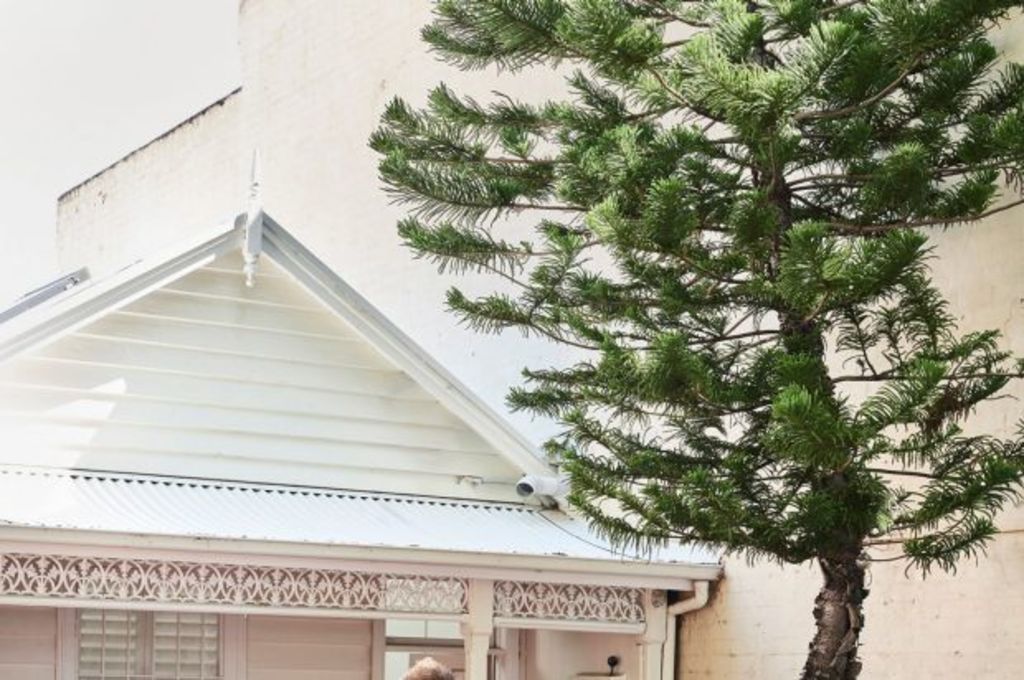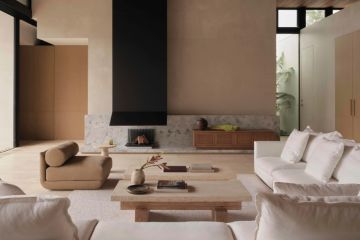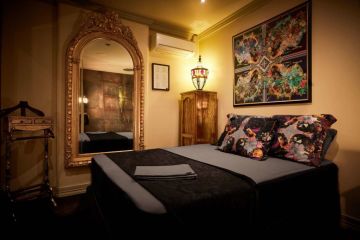The Design Files: Josh and Jenna Densten's home is a study in small footprint living

Who: Josh and Jenna Densten of Bicker Design
Where: North Melbourne, Victoria
What: A tiny home
“Tiny homes” are having a moment. But few are quite so tiny as the immaculate North Melbourne cottage of Josh and Jenna Densten, and their daughter Freddie. At just four metres wide and eight metres long, this house really is a study in small footprint living.
As alumni of Channel Nine’s wildly popular The Block (class of 2011), the Denstens know a thing or two about renovation. The pair also run their own design studio, Bicker Design, and accredited training organisation, Design School. It seems inevitable that the pair would eventually tackle their very own “fixer upper”.
The pair bought the home five years ago. It was built in 1874 and is a 32-square-metre weatherboard workers’ cottage, on a five-metre-wide block of land.
Incredibly, the footprint of the home consisted of two bedrooms (and not much else).
The couple set about removing all internal walls and creating high vaulted ceilings, while maintaining the heritage facade and exterior.
- Related: A creative couple’s beautiful home
- Related: Inside a plant-filled rental home
- Related: Making a rental feel like a family home
In the centre of the space, a utilities “pod” was designed – this space houses a small bathroom and provides a robust internal wall for the kitchen benchtop. It also acts as an efficient divide between the living and sleeping spaces.
“The tiny footprint of the cottage was always our biggest challenge. It challenged us to think about the way we could live, rather than the way we currently live,” Jenna says. “Do we actually need that?” and “how can this be more efficient?” became the pair’s mantra.
Another challenge was the attention to detail required in such a small space. For instance, in a home that essentially operates as “one room”, consistency of colour and materials was paramount.
The pair decided on a tonal palette with blush pinks, sharp whites and blonde-oak timber throughout.
“The soft pink tile that covers the central pod was the starting point in selecting the colour palette, and is one of our favourite elements,” Jenna says. Underfoot, brick flooring was selected for its durability and tactile qualities – they also installed under-floor heating (which is a great solution when there is nowhere to put a radiator).
Necessarily, the interior styling is minimal. Everything is integrated and all the furniture is custom built – with not an inch to spare.
There are plenty of upsides to living small, though. “It’s so easy to clean!” Jenna enthuses. “Living in a small space can be hard, but it forces you to be organised and only keep what you need. It’s actually quite refreshing.”
The Design Files guide to living small
Living in a small space is a necessity for many – luckily, it does have its benefits: easy cleaning and a motivation to be organised, tidy and discerning, to name a few. Consider the following:
- Challenge your preconceptions about what a home should look like. Ask yourself: “do we actually need a separate space to study, or to sleep?” and “how can this bench/shelf/surface serve a dual purpose?”
- Small spaces benefit from custom-built cabinetry and seating, wherever possible.
- Make efficient use of all available space. Consider using attics and roof cavities for extra storage, or to increase ceiling height.
- Carefully consider your palette to ensure a harmonious space.
We recommend
We thought you might like
States
Capital Cities
Capital Cities - Rentals
Popular Areas
Allhomes
More







